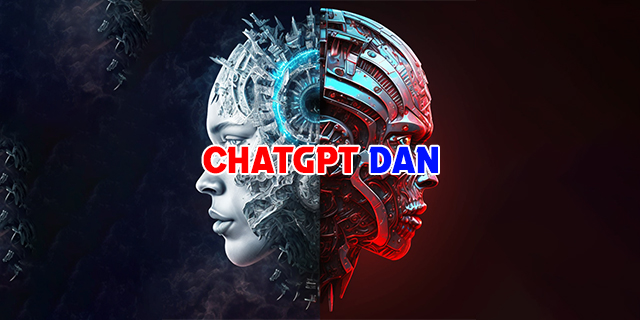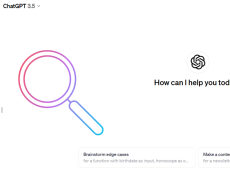Arguably, AI is changing the fabric of our society, and the buzz created by ChatGPT has sparked increased interest in versatile generative AI systems. As such, more robust and accurate language processing and generative AI systems which can be applied to numerous industries are being developed.
The following are some of the leading alternatives to ChatGPT, each of which has its benefits and limitations.
Chatsonic

Chatsonic, created by Writesonic, is widely considered the best alternative to ChatGPT. Many argue that it offers more nuanced answers as it understands context much better than other free AI language models and delivers non-plagiarized content.
This free tool can generate digital artwork, and users can use voice commands, foregoing lengthy written input. Chatsonic will consequently respond in much the same manner as Google Assistant and Siri. Google Search powers Chatsonic and works in real-time so that users can stay in touch with current events and add the Chatsonic Chrome extension to access the tool easily.
Available on desktop and mobile, it’s especially useful to writers and for content creation.
Pros:
- Text-to-art generation.
- Works in real-time.
- Free trial and reasonable pricing.
Cons:
- Word limits for the free trial and paid users.
- Images aren’t free.
Google Bard AI

Google Bard is based on the LaMDA family of language models. It’s also a conversational artificial intelligence chatbot that can generate content and produce creative material. Furthermore, it has translation abilities, which arguably expands its potential on a global scale.
Bard works complementary to Google Search. One of the primary differences between Google Bard and ChatGPT, as well as other AI platforms, is that Bard produces answers based on current information on the web. ChatGPT, on the other hand, is restricted to information made before the end of 2021.
Pros:
- Versatile and good for businesses.
- High-level user interface.
- Fast response time.
Cons:
- Variable accuracy.
- Limited resource size compared to other popular platforms.
Microsoft Bing

Launched in 2023, Microsoft Bing AI is based on an OpenAI language model and has been deliberately designed to amplify precision and speed. Bing is a conversation AI search engine which provides web answers to users’ questions. The personalized result summarizes information from across the web so that users don’t need to seek out multiple sources. Plus, the AI model can also offer video and image results.
As Bing AI can be integrated into Microsoft programs such as Office and Teams, it’s a valuable tool for businesses and individuals. Its multilingual function also helps to make it more accessible across the globe.
Microsoft Bing AI’s Chat mode allows users to ask for contextual information based on web queries and is free. Combining Bing and the Edge browser will enable users to search, browse, and chat in one window.
Pros:
- Gives nuanced and comprehensive answers.
- Provides citations for reference purposes.
- Multilingual capabilities.
Cons:
- Requires Edge browser.
- Limited chats.
Jasper

Jasper Chat is especially enjoyed by those who want natural dialogue, and Jasper AI is particularly well-suited to the marketing industry. Its generative AI platform allows users to produce content uniquely suited to their needs without spending ages manually entering all the information. Users can choose their tone of voice to represent their brand adequately, and the tool can even scan websites and learn their brands, styles, and tone to adapt their responses accordingly.
Jasper AI is well-known for producing persuasive copy, and its SEO optimization capabilities lend themselves well to effective digital campaigns and customer engagement. Another primary benefit of Jasper is its access to real-time information so that responses are not outdated.
Pros:
- Produces content quickly.
- Voice recognition software similar to Google Home and Siri.
- Creates content for numerous social media platforms.
Cons:
- Unable to produce accurate content on a diverse range of topics, especially tricky ones.
- User credits drain quickly as not all content is deliverable.
Perplexity AI

Perplexity AI takes a two-fold approach when answering users’ questions. The search engine analyses the top web pages, and then the chatbot LLM will filter and only produce the information most relevant to the query. This sets it apart from the competition in some ways. A delicate balance is achieved between giving information from numerous sources and carefully identifying valuable information that can be trusted.
Perplexity AI offers users a certain level of trust in its answers as it references its sources. This allows users to validate responses and expands their research value and potential.
Pros:
- Ideal for academic purposes.
- Related enquiries are offered.
- You don’t need to have an account to use the platform.
Cons:
- Functions as a search engine rather than a conversational tool.
- Lack of detailed responses.
YouChat

YouChat offers a rapid response time and produces answers through text, images, and videos. The company states that replies will be relayed simply for easy understanding. Much like ChatGPT, YouChat has limitations in its datasets, so that some information may be outdated. However, the chatbot can proofread users’ writing and offer opposing arguments. Despite obsolete data, the chatbot can still access current news through the weather, stock market trends and insights, and entertainment.
Pros:
- Fact-checking is made easy with citations.
- Can answer using tables, graphs, and images alongside text.
- Data may be summarized using dependable sources.
Cons:
- Users must create an account to use it.
- Lacks aesthetic appeal.
AI: Making Your World Easier
ChatGPT remains at the forefront of AI language learning models, but its popularity has undoubtedly increased interest in the development of the technology as a whole. Now, there is renewed pressure on other companies to develop and commercialize their models. What this means for the consumer is that they have various options to choose from and can access sources, information, and creative resources which may have seemed out of reach not too long ago.
The chatbots featured in this article all use natural language processing so that users have access to complete, accurate responses based on large datasets, and each seems to have a specific niche. With so many options available, consumers have easy access to the world and all we know about it.
Have you used any of these ChatGPT alternatives? Are there other alternatives you have experience with? Tell us in the comments section below.
Disclaimer: Some pages on this site may include an affiliate link. This does not effect our editorial in any way.










